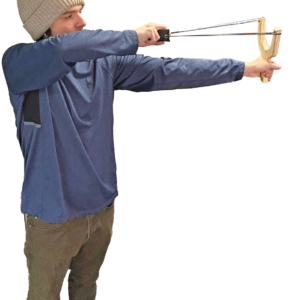
Oh Deer! New Ways to Prepare Your Venison
By Jason Herbert
My family tries to catch, raise or harvest all of our own foods. It’s very rewarding and a lot of fun, but to be honest … sometimes I get tired of the same old venison burger, steaks and roasts. I always knew there was more to do with this precious meat, but until recently, never tried. But one year when I was blessed with three deer, more than the usual two, I began to experiment.
Do it yourself
First and foremost, I process all of my own deer for a few reasons. Mainly because it’s much more cost effective. Also, I know I’m getting my own meat back, just the way I like it. We usually hang the animals a few days, unless it’s really hot outside. Regardless of when we butcher, we follow the same process. Butchering game animals is a totally different topic. If you’re new to it, I recommend watching YouTube, reading a book, or hanging around the local butcher shop for pointers. We generally hang the animal upside down, skin it out and remove the head. We then quarter it up, removing the front legs, back loins, and separating the rib cage from the hind legs. Then… it’s up to the hunter. We save the back loins or “chops” and inside tenderloins. Other than the neck roasts, and some scrap chunks for canning, we grind everything. When it’s all cut up the way we want it, I vacuum seal everything and freeze it until we need it.
The joys of jerky
People have been drying meats for a very long time out of necessity, because they did not have refrigerators. Now, we have come to know this ancient protein storage method as jerky! Jerky has to be one of America’s favorite snack treats for good reason. Jerky tastes amazing, is light, lasts long and is full of protein. I make my jerky in two different ways: with ground meat or with whole muscle meat. With ground meat, I mix ¼ cup of cold water per pound and add whatever seasonings I want. To be honest, I usually use a pre-mixed jerky seasoning packet. I then wait a day or so, mixing frequently, and begin the magical process. With my jerky gun, I put the ground meat into an aluminum tube similar to a caulk gun and squirt it onto my food dehydrator racks. I use the highest not crispy, but firm and chewy. I want to add that a dehydrator isn’t necessary, jerky can be made in an over or on a grill, too. In Africa, they make their famous (and delicious – I lived off it while there) Billtong! It’s dried game meat done on a metal rack on one’s roof. The dry temps, local spices, wind, and sun add to this amazing product. Yum!
I also make whole muscle jerky in the same manner, but without the jerky gun. I slice the meat to the preferred thickness on my meat slicer, usually ¼” thick. I then marinate it in a seasoning mixture for a few days, stirring often. Then I lay each piece on the dehydrator rack to dry. This takes a bit longer to dry because the meat is usually thicker. Regardless of what type I’m making, the Herbert kids are usually waiting, mouths watering, by the dehydrator. Once we’ve all eaten our fill, I vacuum seal a bunch and freeze it for later. We will certainly eat it all before it will ever go bad. The kids pack it in lunches, share with friends, teachers and coaches, etc. It never lasts long. In fact, last fall my oldest used some of our famous goose jerky to bribe the coach into letting the freshman football team out of laps after practice! We have quite a reputation for being good jerky makers in our town.
Canned venison
I couldn’t believe my mouth! I had just cracked open a jar of canned venison scraps, poured it into a pan, added a bit of gravy mix powder and water, turned on the stove, and cracked a beer. By the time my beer was gone, the venison was ready – and looked amazing! I poured it over some instant mashed potatoes and enjoyed a fantastic meal that I couldn’t believe I created. I love to cook, but was never able to get my venison to taste like professional stew until now.
Canned venison is super easy to make, and really delicious. Basically, I describe it like the greatest store-bought, canned beef stew meat I’ve ever eaten. It’s really that good. Proper canning in itself is also a whole other topic, but here is my process in a nutshell. I take clean chunks of venison and pack them tightly into sanitized quart canning jars. I then add a jalapeno, onion slice, nothing, or whatever strikes my fancy, and seal tightly. Then I follow the directions for my elevation as far as how long and how much pressure to run it though my pressure cooker. No liquids are necessary, as the venison cooks down into its own juices. The canned venison will also last a long while, but usually doesn’t make it past March in our house. I use it in soups stews, fried, sandwiches, and poured over potatoes, like I described earlier.
Smoked meats
Another old food preservation method that’s become popular is smoking meats. Delicious roasts, salami, snack sticks, jerky, and whatever can be made on a smoker. I like to do several things with venison on my smoker. Once again, the Internet and books are a great resource for how to properly smoke meats. I will say that it can be done on a grill or open flame as well, not just on a meat smoker. I follow an Internet recipe on my sausages, and mix it equally with a fatty pork. I buy casings from the local butcher shop, and make all sorts of things from summer sausage, to brats and snack sticks.
For my roasts, I also use a rub recipe. I smoke the meat to the proper interior temperature, bring it off to cool, and then slice it thinly on our meat slicer. Once again, we eat what we can, and freeze the rest. I do a lot of smoking over oak and hickory that I have cut. Others use cherry, apple, pear and a variety of various fragrant woods. I start my meat smoking with grilling charcoal, and then add the water soaked wood for smoke as well as some dry for heat.
These are just a few things I like to do with venison, and I’m happy to say there are plenty more I haven’t tried. And … I’m getting hungry just writing this! I can’t imagine how you, the reader, must feel. Give it a try this fall, step up your venison cooking a notch and enter into the next level of wild game cooking and preservation.



